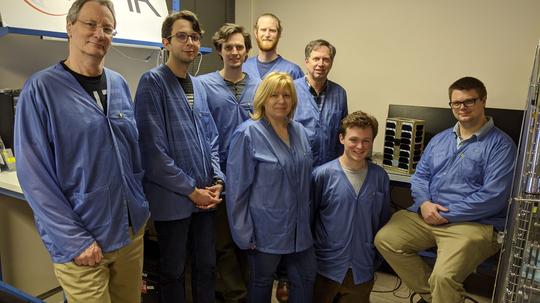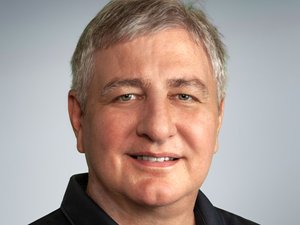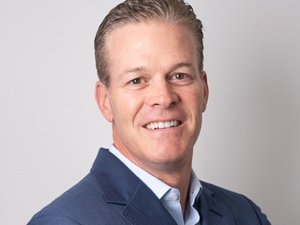
Roaming charges are a fact of life if you’re traveling abroad and using another carrier’s cell towers. In the near future, your roaming charges could come from space.
Falls Church startup Lynk is working on using satellites to make cellphone coverage available anywhere on Earth. Lynk, formerly UbiquitiLink, has been launching low-orbit satellites that it says cellphones can interact with as if they are cell towers. When a phone is not within range of a cell tower, it can “roam” onto one of Lynk’s virtual towers circling the globe.
Currently, cellphones get coverage pretty much entirely from cell towers, which only have a coverage range of about 35 kilometers (or roughly 22 miles). That means there are a lot of dead zones in rural, remote and less densely populated areas.
“There's a huge demand for it. And we basically have proven the core technology – that this can be done,” said Charles Miller, Lynk’s founder and CEO. “The rest is just execution and implementation.”
Miller said that Lynk has achieved some major engineering breakthroughs that make its plan is possible. Connecting cellphones using satellites hundreds of miles in the air—as opposed to ground towers a few miles away—was previously thought impossible, Miller said.
“You really needed really smart people both flight and space, and really smart people in wireless technology, and you needed to put them in the same room together,” Miller said. “And so we just happened to be the first to figure this out.”
The ability to stay connected all the time isn’t just a luxury; it can have major public safety implications. Miller highlighted the example of planned blackouts in some California communities that were meant to reduce the risk of wildfires. When the power went out, so did many cell towers, leaving people with no way to receive emergency alerts or make emergency calls.
Lynk’s vision has earned it recognition as a finalist for the SXSW Innovation Awards in the “Connecting People” category. Winners will be announced in March at the annual festival in Austin.
“We're excited by visiting SXSW and hope to get our name out to a broader audience,” Miller said. “It's been very quiet as a small company and that's a great audience that's looking for the next big thing, and we think we're it.”
So far, Lynk has had three satellite launches, with a fourth expected in March. Its last spacecraft was launched by SpaceX and assembled on the International Space Station, before being attached to another craft owned by Northrop Grumman.
The company is pursuing a business model focused on commercial cellphone service. Customers who drop off the coverage of cell towers can roam using Lynk’s satellites and then pay a premium that shows up their monthly bill, just like other roaming charges. Lynk would split the fee with its cellular carrier partners.
Miller says Lynk is currently running tests for its space-based cell tower system with 36 companies worldwide, 26 of which are mobile network operators. To achieve the ultimate goal of a blanket network covering the globe, Miller says Lynk will have to add more carrier partnerships to its list, overcome regulatory hurdles, and significantly grow its engineering operation.
The company currently has 16 full-time employees and about a dozen other part-time workers, and is looking to hire eight more engineers for its Falls Church operation. It’s raised about $12 million in funding, according to Axios. Its last raise was a $5.2 million round in July from Revolution’s “Rise of the Rest” fund and Blazar Ventures.
Lynk isn’t alone in trying to fill in telecommunication gaps on Earth by putting its tech in space. Tysons-based Omnispace, has been developing technology to bridge ground telecom infrastructure with satellites to fill in coverage gaps. OneWeb and SpaceX-owned Starlink have also been launching satellites to build constellations that can beam internet from orbit.
Miller says two things set Lynk apart: It is focused on filling cellular coverage as opposed to providing full-fledged internet service, and its system doesn’t require maintaining both ground and space infrastructure; customers’ cellphones will talk directly with its satellites.
“We're the first and only company to be going directly to the phone, right to this standard phone that's already in your pocket,” Miller said.




